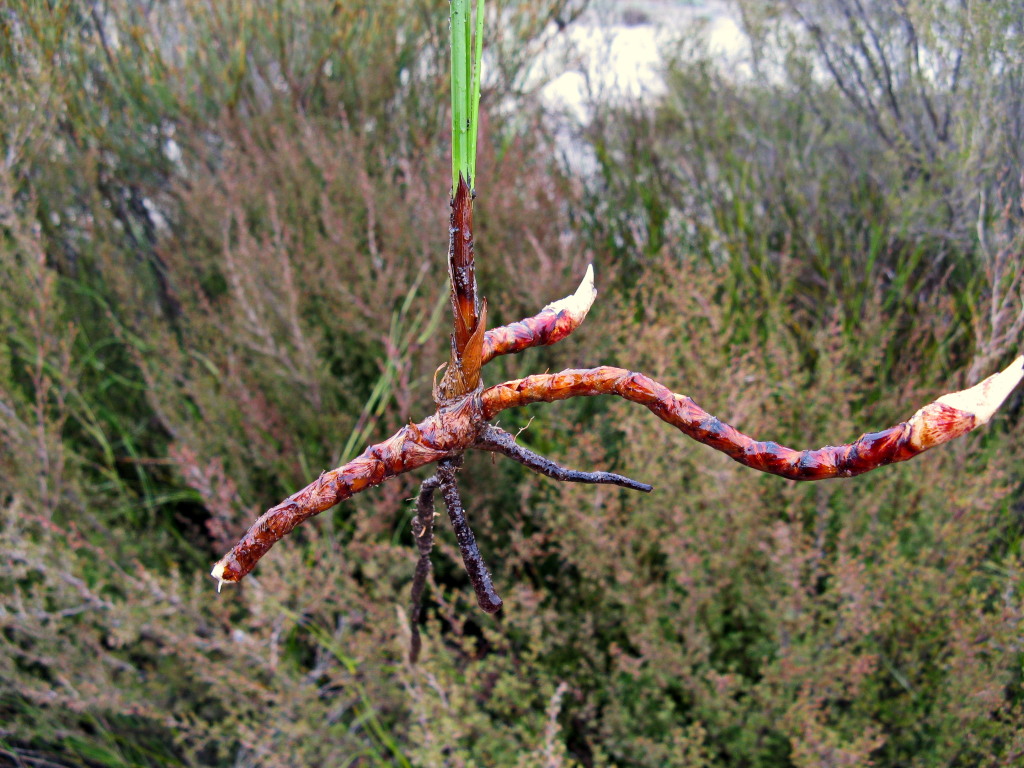Caustis
Rhizomatous perennials. Culms terete, striate, often bulbously thickened at base. Leaves reduced to sheaths along and at base of culm. Inflorescence as long as or longer than culms, occasionally functionally unisexual, with numerous 1-grooved to flattened branches, the ultimate spikelet-bearing branchlets elongating with maturity. Spikelets with 1 bisexual or female flower, often with a male below it; glumes 3–6, spirally arranged, usually puberulous on adaxial surface near apex; lower glumes empty, uppermost occasionally reduced or empty; perianth absent; stamens 3–6; style 3–5-fid; style-base narrow-conical to pyramidal, thick, hard, hispid at apex, smooth and shining below, persistent on nut. Nut trigonous to terete, readily deciduous, glabrous, with a narrow elongated neck between body of nut and style-base.
About 7 species, endemic to Australia, represented in all States except NT.
The distribution of male and female flowers and spikelets varies greatly. What appear to be functional male and female inflorescences can occur on culms side by side on the same rhizome. Nut-bearing spikelets mostly have old stamen filaments present, while spikelets with anthers exserted also have exserted styles, but it is not clear whether such parts are functional. The life cycle of these plants needs study.
Note: Nut length includes the narrow neck below the style-base as well as the broader body.
Wilson, K.L. (1994). Cyperaceae. In: Walsh, N.G.; Entwisle, T.J., Flora of Victoria Vol. 2, Ferns and Allied Plants, Conifers and Monocotyledons, pp. 238–356. Inkata Press, Melbourne.
 Spinning
Spinning

